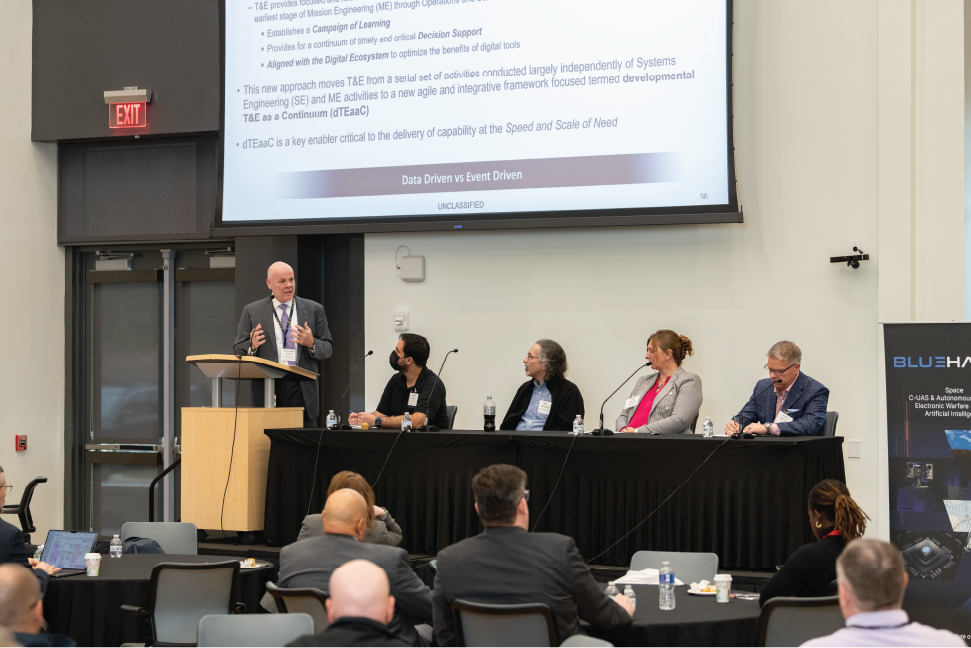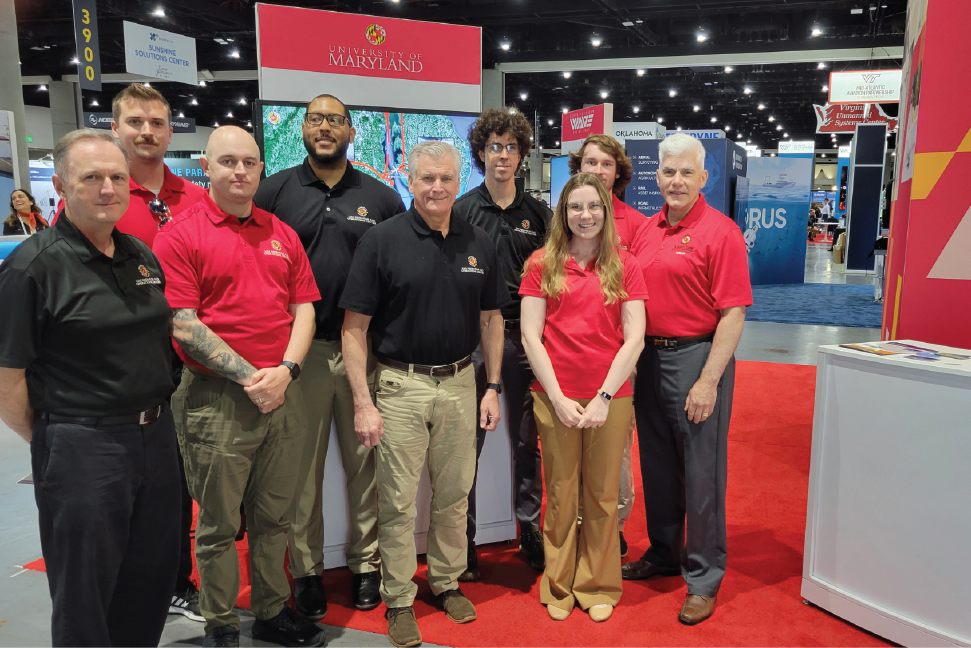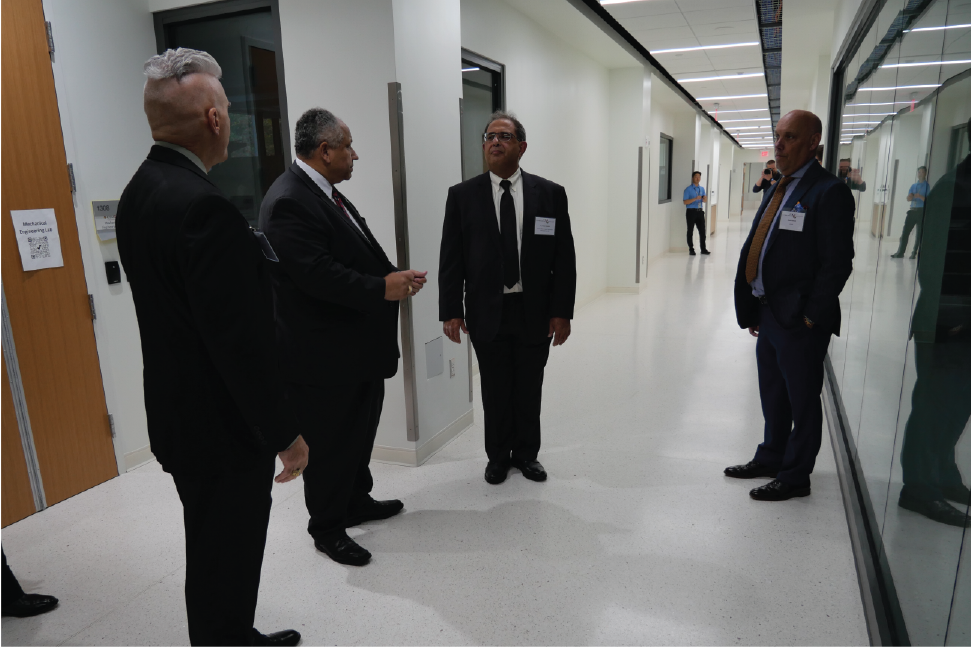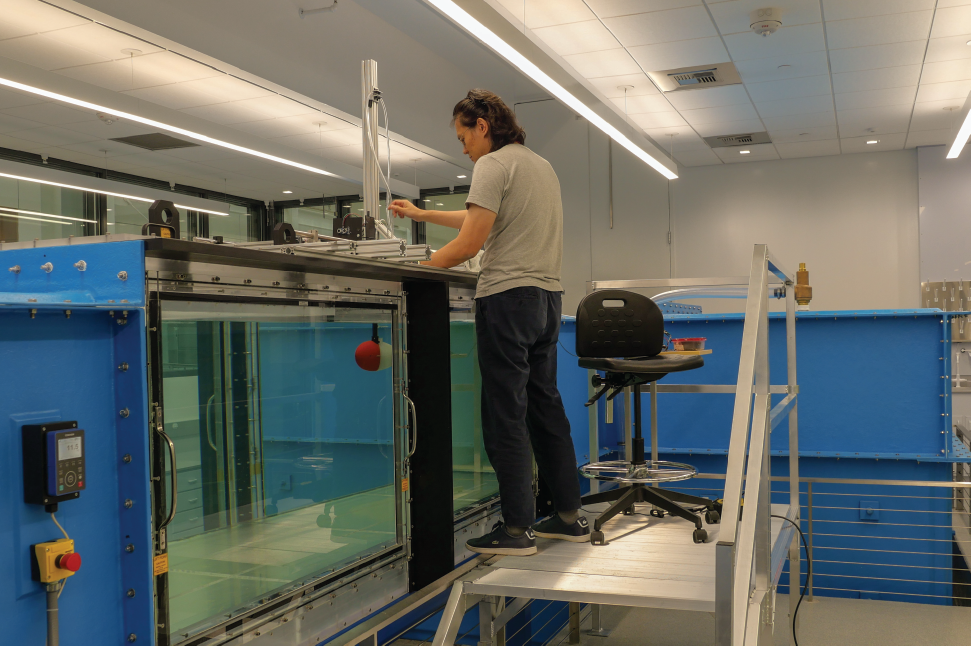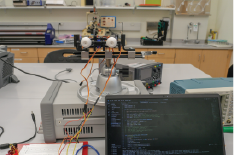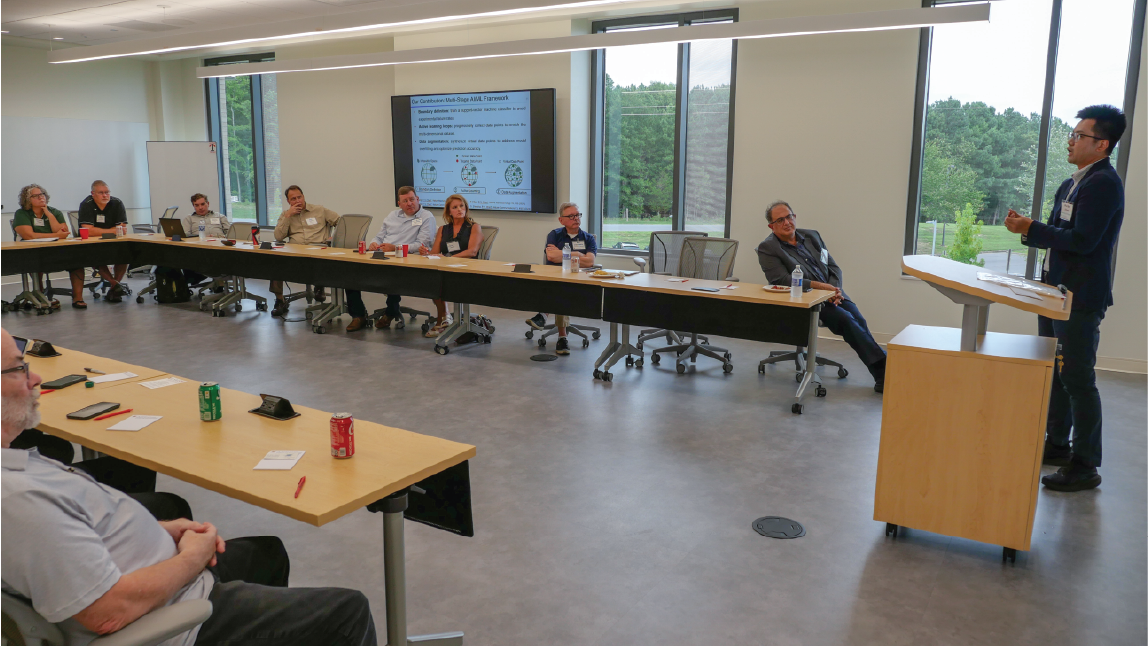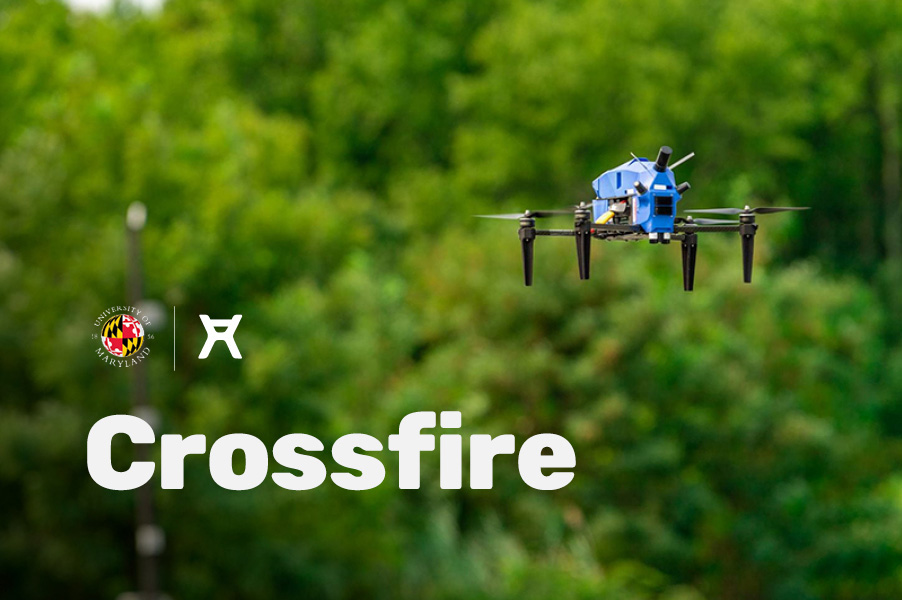News Story
Autonomy partnerships strengthening Southern Maryland
The MATRIX Lab, a hub for autonomous research located in Southern Maryland, is growing, thanks in part to its regional partnerships. Its collaborations with Deloitte and the Naval Air Warfare Center Aircraft Division (NAWCAD) benefit Southern Maryland’s economy and workforce, as well as both researchers and students at the University of Maryland.
Autonomy and Southern Maryland
The State of Maryland has been investing in regional economic development technology corridors for years, based on key established regional partners and the assets of the University System of Maryland. The “autonomy corridor” extends through central and southern Maryland and includes both UMD and USMSM facilities. This region is home to government agencies, academic institutions, and industry partners focused on autonomy and uncrewed systems.
 Because autonomy is especially important to advancing academia, industry, government, and the workforce, the Maryland Economic Development Corporation and Deloitte hosted the Maryland Autonomy Summit at the USMSM SMART Building in November 2022. Participants discussed how to make Southern Maryland a leader in the autonomous technologies industry. Regional resources include the AeroPark Innovation District, which contains the St. Mary’s County Regional Airport, the USMSM SMART Building, the UMD MATRIX Lab, and the UMD UAS Research and Operations Center (UROC). The area is also part of the Chesapeake Bay UAS Route Network, and has a strong Navy presence with NAWCAD, AirWorks, and SMNA.
Because autonomy is especially important to advancing academia, industry, government, and the workforce, the Maryland Economic Development Corporation and Deloitte hosted the Maryland Autonomy Summit at the USMSM SMART Building in November 2022. Participants discussed how to make Southern Maryland a leader in the autonomous technologies industry. Regional resources include the AeroPark Innovation District, which contains the St. Mary’s County Regional Airport, the USMSM SMART Building, the UMD MATRIX Lab, and the UMD UAS Research and Operations Center (UROC). The area is also part of the Chesapeake Bay UAS Route Network, and has a strong Navy presence with NAWCAD, AirWorks, and SMNA.
Panel sessions were integral to the summit. One discussion focused on the current and future state of autonomy, and featured UROC Director John Slaughter. Another discussion centered on how Maryland can accelerate its local autonomy ecosystem. It featured UMD MATRIX Lab Director of Operations and Outreach, Matt Scassero; and NAWCAD Director of Engineering Education and Research Partnerships, Theresa Shafer.
Partnership bridging gaps
In November 2022, the MATRIX Lab hosted the UMD-NAWCAD Seed Grant Review and Discussion at the USMSM SMART Building. Technical experts from UMD and the federal government reviewed and discussed current and future research seed grants. The review was part of the UMD, USMSM, and NAWCAD commitment to research, education, and outreach collaborations for the region, the state of Maryland, and the nation.
Seed grants help bridge the gap from technology to warfighters and highlight important collaborative research relationships between government and academia. Such efforts contribute to the current and future workforce throughout the Southern Maryland region, ultimately impacting industry and generating new start-up ventures across the country.
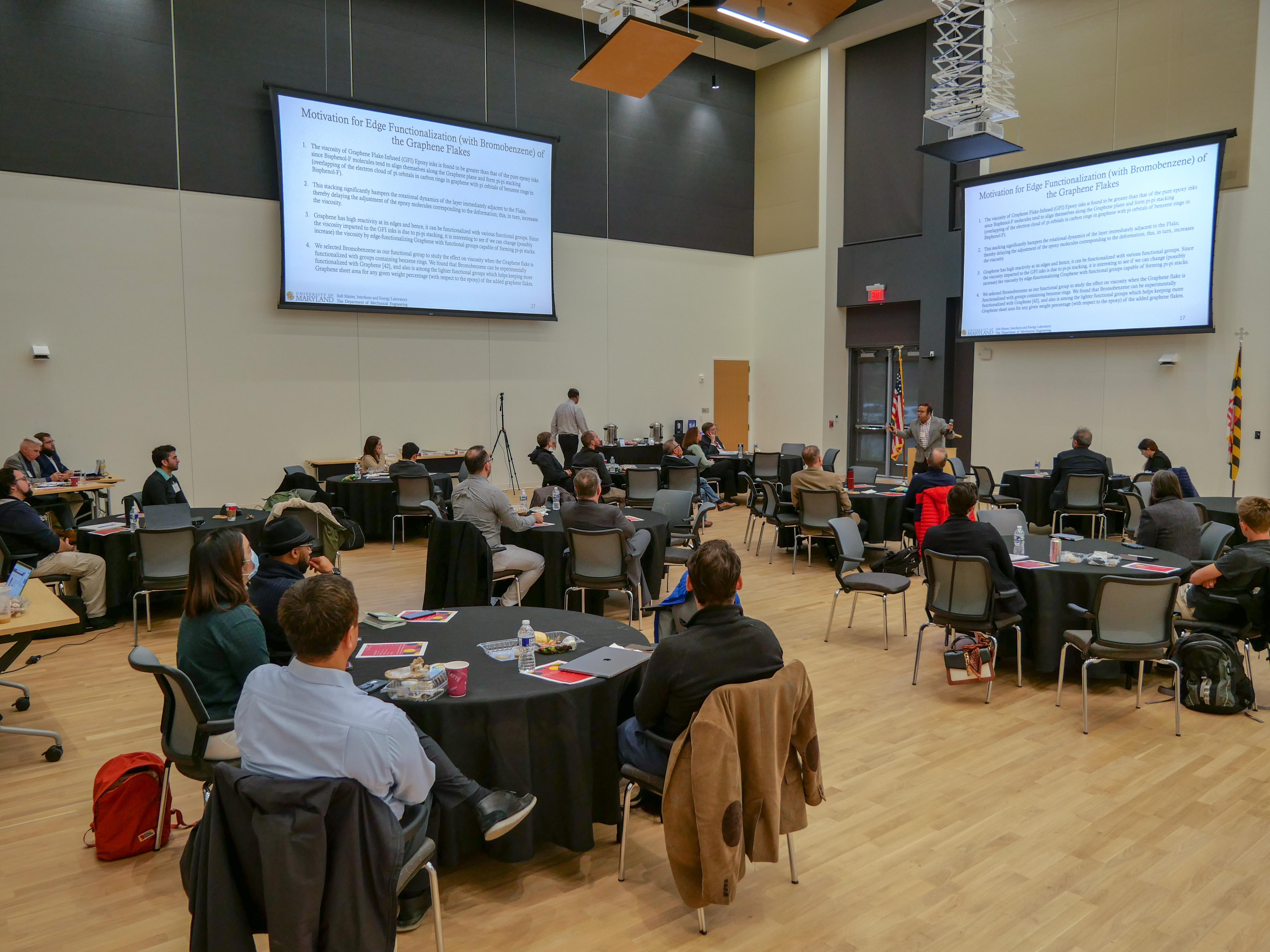
"Our shared goal is for this important work to be translated into real-life applications, and for our education to provide greater opportunities for the region, our state and the country at large."
Reza Ghodssi, Executive Director of Research and Innovation for the UMD Clark School of Engineering at USMSM
Nine UMD faculty from the Clark School of Engineering and the School of Public Health presented summaries of their current work. The review was led by Theresa Shafer, Director of Engineering Education and Research Partnerships for NAWCAD; and Reza Ghodssi, Executive Director of Research and Innovation for the UMD Clark School of Engineering at USMSM.
“We see the MATRIX Lab as a bridge to enable collaborative research and access to cutting-edge educational activities—which are some of the primary goals of the strong NAWCAD-UMD relationship,” Ghodssi said. “Our shared goal is for this important work to be translated into real-life applications, and for our education to provide greater opportunities for the region, our state and the country at large. We are truly excited about the future.”
UMD, NAWCAD, and education
NAWCAD is working with UMD to bring mechanical and electrical and computer engineering programs to USMSM. The programs are tailored to prepare students for technology careers, particularly in Southern Maryland, where there are industry and government opportunities, including at Naval Air Station Patuxent River. Because of these programs, people who grew up in Southern Maryland can continue to live, learn, and work in the region. Click here to watch a video about this education partnership.
 Students can take advantage of NAWCAD’s many hiring initiatives, including the STEM Student Employment Program (SSEP), the Naval Research Enterprise Internship Program (NREIP), and the SMART Scholarship for Service Program. Through these initiatives, students can begin careers in federal civil service and gain meaningful work experience related to their field of study and/or career goals. A NAWCAD internship can lead to employment opportunities upon successful graduation and completion of all program requirements.
Students can take advantage of NAWCAD’s many hiring initiatives, including the STEM Student Employment Program (SSEP), the Naval Research Enterprise Internship Program (NREIP), and the SMART Scholarship for Service Program. Through these initiatives, students can begin careers in federal civil service and gain meaningful work experience related to their field of study and/or career goals. A NAWCAD internship can lead to employment opportunities upon successful graduation and completion of all program requirements.
“The benefit for interns is they get to apply the knowledge they learned in the classroom in a work environment and see how what they’re learning can be used. It also helps them to learn about things that they like in the real world and see the importance of what we do and how we do it,” said Theresa Shafer, Director of Engineering Education and Research Partnerships for NAWCAD. “The benefit to NAWCAD is it helps bring students into our organization so they can get a feel for our culture and our mission. By the time they convert into employment, they already have that experience. Most student resumes that we see have internship experience on them, so for [the students] to be competitive, they need to get work experience.”
One way to take advantage of this opportunity is to earn an Associate of Science in Engineering degree at the College of Southern Maryland. Students may then apply to the University of Maryland to earn a Bachelor of Science in Mechanical Engineering or Bachelor of Science in Electrical Engineering at USMSM.
About the MATRIX Lab
The Maryland Autonomous Technologies Research Innovation and eXploration (MATRIX) Lab is a UMD hub for autonomous technologies and uncrewed systems research in Southern Maryland. It is located at the University System of Maryland at Southern Maryland (USMSM) campus inside their Southern Maryland Autonomous Research and Technology (SMART) building.
Published April 25, 2023
